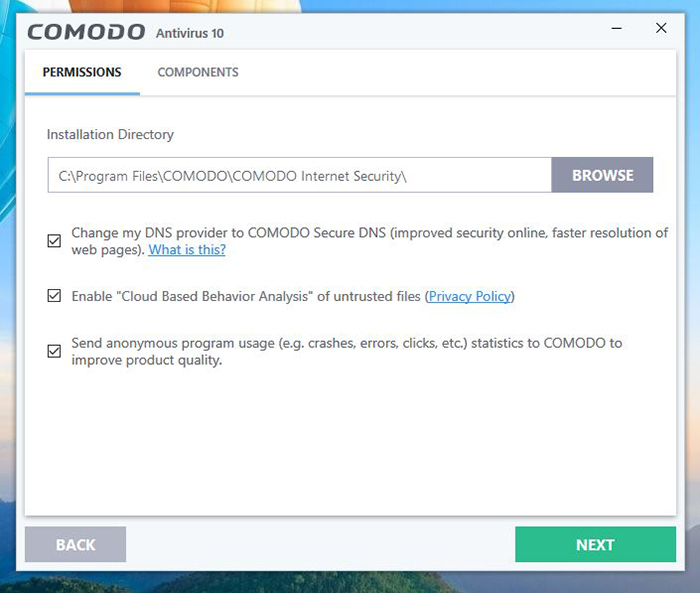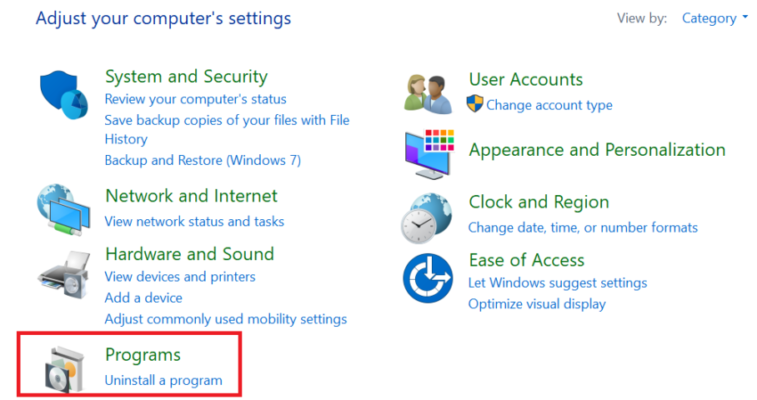

#Comodo firewall 11 user guide windows
See the Windows Firewall with Advanced Security Deployment


This article does not cover step-by-step ruleĬonfiguration. One key example is the default Block behavior for Inbound connections.įigure 2: Default inbound/outbound settings These settings have been designed to secure your device for use in most network scenarios. Maintain the default settings in Windows Defenderįirewall whenever possible. View detailed settings for each profile by right-clicking the top-level Windows Defender Firewall with Advanced Security node in the left pane and then selecting Properties. Public profile: Designed with higher security in mindįor public networks like Wi-Fi hotspots, coffee shops, airports, hotels, or stores In private networks such as a home network Private profile: Designed for and best used The Overview panel displays security settings for each type of network to which the device can connect.ĭomain profile: Used for networks where there is a system of account authentication against a domain controller (DC), such as an Azure Active Directory DC When you open the Windows Defender Firewall for the first time, you can see the default settings applicable to the local computer. To open Windows Firewall, go to the Start menu, select Run, Networks and enterprise desktop/server systems. These recommendations cover a wide range of deployments including home Configuring your Windows Firewall based on theįollowing best practices can help you optimize protection for devices in your Network traffic filtering and blocks unauthorized network traffic flowing into Again, my local subnet is 192.168.10.1/24, and my host IP is 192.168.10.131.Windows Defender Firewall with Advanced Security provides host-based, two-way Lastly, I have only installed the firewall portion of Comodo CIS (that is to say, no anti-virus)Īny idea why these components of Comodo CIS are attempting to access the internet? In an effort to provide all the relevant information, I've also attached a small snapshot of the Firewall Event log filtered specifically for the applications "cmdagent.exe" and "cmdinstall.exe".The Enable Website Filtering option under General Settings > Advanced Settings > Website Filtering.The Enable VirusScope option under General Settings > Advanced Settings > VirusScope.The Enable Cloud Lookup option under General Settings > File Rating Settings.The Enable HIPS option under General Settings > HIPS Settings.

The User Statistics option under General Settings > Logging.All the options under General Settings > Updates.Any insights?Īdditionally, I realize that cmdagent.exe and cmdinstall.exe are integral parts of Comodo CIS, but I'm somewhat alarmed that they are trying to access the internet, particularly since I think I have disabled all the options that would seem to justify it, including: I have attached a small snapshot of the Firewall Event log filtered specifically for the application "Windows Operating System". What precisely does this mean?Ģ) I'm aware that IPv6 can be disabled per network adapter, but I'm specifically trying to determine: can the firewall be configured to block ALL outbound and inbound IPv6 communication?ģ) My firewall log indicates that some application called simply, "Windows Operating System" is being blocked.Ī) What is the file or process associated with this application? In other words, what is this?ī) How do I determine what firewall configuration or rule is responsible for blocking this (or any) application? The User Guide indicates that, "if enabled, CIS will filter IPv6 network traffic in addition to IPv4 traffic." This option seems to imply that unless enabled, IPv6 outbound and inbound communication is completely unfiltered by the firewall, but that just sounds silly, so I hope I'm missing something. I'm testing CIS on Windows 7, and I have read the User Guide, but I have some lingering questions that I hope someone here can answer:ġ) The Filter IPv6 Traffic option under Settings > Firewall > Firewall Settings is unclear (or at least I hope it is).


 0 kommentar(er)
0 kommentar(er)
